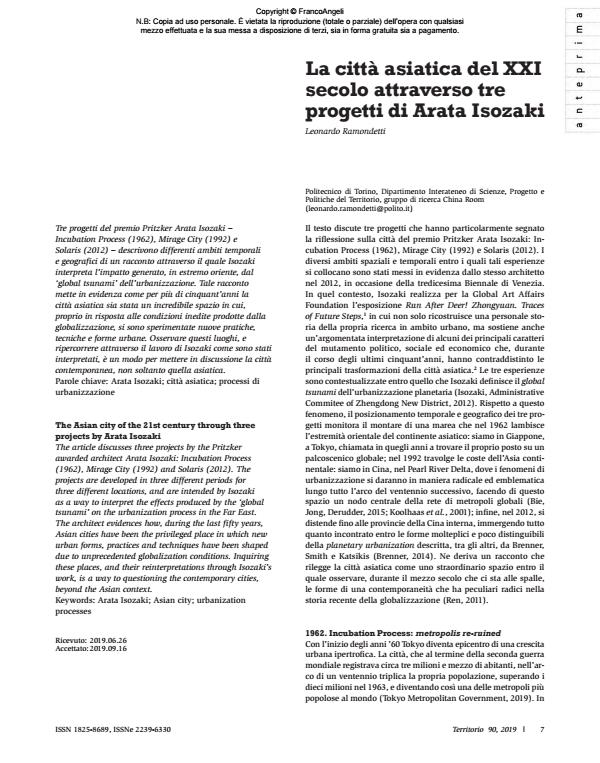La città asiatica del XXI secolo attraverso tre progetti di Arata Isozaki
Titolo Rivista TERRITORIO
Autori/Curatori Leonardo Ramondetti
Anno di pubblicazione 2020 Fascicolo 2019/90
Lingua Italiano Numero pagine 14 P. 7-20 Dimensione file 882 KB
DOI 10.3280/TR2019-090001
Il DOI è il codice a barre della proprietà intellettuale: per saperne di più
clicca qui
Qui sotto puoi vedere in anteprima la prima pagina di questo articolo.
Se questo articolo ti interessa, lo puoi acquistare (e scaricare in formato pdf) seguendo le facili indicazioni per acquistare il download credit. Acquista Download Credits per scaricare questo Articolo in formato PDF

FrancoAngeli è membro della Publishers International Linking Association, Inc (PILA)associazione indipendente e non profit per facilitare (attraverso i servizi tecnologici implementati da CrossRef.org) l’accesso degli studiosi ai contenuti digitali nelle pubblicazioni professionali e scientifiche
Tre progetti del premio Pritzker Arata Isozaki - Incubation Process (1962), Mirage City (1992) e Solaris (2012) - descrivono differenti ambiti temporali e geografici di un racconto attraverso il quale Isozaki interpreta l’impatto generato, in estremo oriente, dal ‘global tsunami’ dell’urbanizzazione. Tale racconto mette in evidenza come per più di cinquant’anni la città asiatica sia stata un incredibile spazio in cui, proprio in risposta alle condizioni inedite prodotte dalla globalizzazione, si sono sperimentate nuove pratiche, tecniche e forme urbane. Osservare questi luoghi, e ripercorrere attraverso il lavoro di Isozaki come sono stati interpretati, è un modo per mettere in discussione la città contemporanea, non soltanto quella asiatica.
Parole chiave:Arata Isozaki; citta asiatica; processi di urbanizzazione
- Projects for the Chinese city 2000–2020: the new towns by Kurokawa, Arup, and Isozaki in the Central Plains of China Leonardo Ramondetti, in Planning Perspectives /2025 pp.1
DOI: 10.1080/02665433.2025.2524694
Leonardo Ramondetti, La città asiatica del XXI secolo attraverso tre progetti di Arata Isozaki in "TERRITORIO" 90/2019, pp 7-20, DOI: 10.3280/TR2019-090001